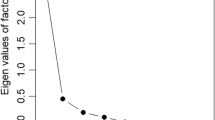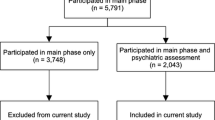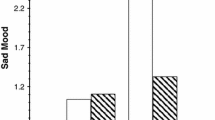Abstract
The long-term effects of undesirable life events are reviewed. Two forms of major event that are outside the child's control, divorce and war, are discussed together with the literature investigating the impact of undesirable life events on subsequent risk for psychopathology and maladjustment. The impact of any event cannot be easily predicted without a substantial knowledge of its antecedents, nature and consequences for the child's current environmental circumstances. The indications are that some children may be life event prone as a consequence of either not being protected from adverse circumstances in the family or peer group; or contributing, through their own behavioural style, to an increased likelihood of life event occurrence. The evidence supports the notion that, whatever the origins of life events, they increase the risk of subsequent psychopathology or poor adaptation to subsequent environmental demands such as school achievement. There are marked individual differences in outcome from exposure to similar severe events. The degree of risk for either subsequent psychopathology or poor adaptation is best determined by a knowledge of life events in association with other forms of adverse or ameliorating circumstances rather than by life events alone. Psychological and physiological responses to events, as well as measures of the environment, should be incorporated in future longitudinal research to assist in explaining individual differences in outcome to similar undesirable circumstances.
Résumé
Les effets à long terme d'événements de vie indésirables sont passés en revue. 2 formes d'événements majeurs qui sont hors du contrôle de l'enfant, le divorce et la guerre, sont discutés simultanément ainsi que la littérature passant en revue l'impact des événements de vie indésirables sur le risque subséquent en psychopathologie et les troubles de l'adaptation. L'impact d'un événement ne peut pas être prédit facilement sans une connaissance substantielle de ses antécédents, de sa nature et de ses conséquences sur les circonstances présentes environnementales de l'enfant. Il existe des indications que certains enfants peuvent être sensibles aux événements de vie du fait, soit de ne pas avoir été protégés de ces circonstances adverses par la famille ou le groupe de pairs; soit en contribuant par leur propre style comportemental, à une occurrence acrue de l'événement de vie. Ce fait renforce la notion que quelle que soit l'origine des événements de vie, ils augmentent le risque de conséquences psychopathologiques et d'une moins bonne adaptation aux demandes environnementales ultérieures telle que la réussite scolaire. Il n'y avait pas de différence individuelle importante dans le devenir après exposition à des événements sévères semblables. Le degré de risque concernant les conséquences psychopathologiques ou une mauvaise adaptation est mieux déterminé par une connaissance des liens des événements de vie avec d'autres formes d'adversité ou au contraire avec des facteurs de protection plutôt que par les événements de vie seuls. Les réponses psychologiques et physiologiques aux événements, aussi bien que les données de l'environnement, devraient être incorporées dans les recherches longitudinales futures pour permettre l'explication des différences individuelles dans le devenir de telles circonstances indésirables.
Zusammenfassung
Die Langzeitauswirkungen ungünstiger Lebensereignisse werden in einer Literaturübersicht dargestellt. Zwei schwerwiegenden Ereignisse — Scheidung und Krieg —, die beide außerhalb der Kontrolle des Kindes liegen, werden gemeinsam im Hinblick auf den Einfluß ungünstiger Lebensereignisse auf die Entwicklung von Psychopathologie und Fehlanpassungen diskutiert. Die Auswirkung eines Ereignisses kann ohne erhebliche Kenntnisse über dessen Vorläufer, Art und Konsequenzen für die gegenwärtigen Umweltbedingungen des Kindes nicht direkt vorhergesagt werden. Es gibt Anzeichen dafür, daß einige Kinder ungünstigen Lebensereignissen überdurchschnittlich häufig ausgesetzt sind, weil die Familie bzw. die “peer group” die Kinder nicht hinreichend schützt. Kinder können aber auch durch ihr eigenes Verhalten zu einem erhöhten Risiko beitragen. Bisherige Untersuchungen unterstützen die Hypothese, daß — unabhängig von der Art des Lebensereignisses — das Risiko für späteres Auftreten von Psychopathologie bzw. Fehlanpassungen an Anforderungen der Umwelt (z. B. Schulleistungen) steigt. Es gibt selbst bei ähnlich schweren Ereignissen ausgeprägte individuelle Unterschiede im Hinblick auf den Ausgang. Das Risiko für die Entwicklung späterer psychopathologischer Auffälligkeiten bzw. Fehlanpassungen kann am besten durch die Kenntnis der Lebensereignisse in Verbindung mit anderen ungünstigen oder protektiven Einflüssen vorhergesagt werden als allein durch Kenntnis des Lebensereignisses. Psychologische und physiologische Reaktionen auf Ereignisse sollten ebenso wie die Erfassung von Umweltfaktoren in zuküftigen Längsschnittuntersuchungen berücksichtigt werden, um individuelle Unterschiede im Hinblick auf den Ausgang nach ähnlich schwerwiegenden Ereignissen besser erklären zu können.
Similar content being viewed by others
References
Berden, G.F.M.G., Althaus, M. & Verhulst F.C. (1990). Major life events and changes in the behavioural functioning of childrenJournal of Child Psychology and Psychiatry, 31, 949–960.
Bowlby, J. (1980).Attachment and Loss. Vol. 3: Loss, Sadness and Depression. New York: Basic Books.
Brown, G.W. (1988). Early loss of parent and depression in adult life. In S. Fisher & J. Reason (Eds.),Handbook of Life Stress, Cognition and Health. Chichester: Wiley.
Brown, G.W., Lemyre, L. & Bifulco, A. (1992). Social factors and recovery from anxiety and depressive disorders: A test of specificity.British Journal of Psychiatry, 152, 44–54.
Brown, G.W., Adler, Z. & Bifulco, A. (1988). Life events, difficulties and recovery from chronic depression.British Journal of Psychiatry, 152, 487–498.
Brown, G.W., Bifulco, A. & Harris, T.O. (1987). Life events vulnerability and onset of depression: Some refinements.British Journal of Psychiatry, 150, 30–42
Compas, B.E. (1987). Coping with stress during childhood and adolescence.Psychological Bulletin, 101, 275–302.
Compas, B.E. (1989). Risk factors for emotional and behavioural problems in young adolescents and parental stress and symptoms.Journal of Consulting and Clinical Psychology, 57, 732–740.
Dubois, D.L., Felner, R.D., Brand, S., Adam, A. & Evans, E. g. (1992): A prospective study of life stress, social support, and adaptation in early adolescence.Child Development, 63, 542–557.
Goodyer, I.M. (1990).Life Experiences, Development and Childhood Psychopathology. Chichester: Wiley.
Goodyer, I.M. & Altham, P.M.E. (1991a). Lifetime exit events and recent social and family adversities in anxious and depressed school-age children and adolescents. I.Journal of Affective Disorders, 21, 219–28.
Goodyer, I.M. & Altham, P.M.E. (1991b). Lifetime exit events and recent social and family adversities in anxious and depressed school-age children and adolescents. II.Journal of Affective Disorders, 21, 229–39.
Goodyer, I.M., Germany, E., Gowrusankur, J. & Altham, P.M.E. (1991). Social influences on the course of anxious and depressive disorders in school-age children.British Journal of Psychiatry, 158, 676–84.
Goodyer, I.M., Wright, C. & Altham, P.M.E. (1988). Maternal adversity and recent life events in childhood and adolescence.Journal of Child Psychology and Psychiatry, 5, 651–69.
Hellgren, L., Gillberg, C. & Enerskog, I. (1986). Antecedents of adolescent psychoses: A population-based study of school health problems in children who develop psychosis in adolescence.Journal of the American Academy of Child and Adolescent Psychiatry, 26, 351–355.
Hetherington, E.M. (1989). Coping with family transitions: winners, losers and survivors.Child Development, 60, 1–14.
Hetherington, E.M. (1992). Coping with marital transitions: a family systems perspective. In E.M. Hetherington & W.G. Clintempeel (Eds.),Coping with Marital Transitions (pp. 1–14). Monographs of the Society for Research in Child Development, No. 227, Vol. 57, No. 2-3.
Hetherington, E.M., Cox, M.J. & Cox, R. (1985) Long term effects of divorce and remarriage on the adjustment of children.Journal of the American Academy of Child Psychiatry, 24, 518–530.
Kinzie, J.D., Frederick, M.R. & Ruth, B. (1984). Post traumatic stress disorder among survivors of Cambodian concentration camps.American Journal of Psychiatry, 141, 645–650.
Kinzie, J.D., Sack, W., Angell, M., Mason, S. & Ruth, B. (1986). The psychiatric effects of massive trauma on Cambodian children, 1. The children.Journal of the American Academy of Child Psychiatry, 25, 370–376.
Leon, G.R., Butcher, J.N., Kleinman, M., Goldberg, A. & Alnagor, M. (1981). Survivors of the holocaust and their children: current status and adjustment.Journal of Personality and Social Psychology 41, 503–516.
Lindner, M.S., Hagan, M.S. & Brown, J.C. (1992). The adjustment of children in nondivorced, divorced, single-mother and remarried families. In E.M. Hetherington and W.G. Clintempeel (Eds.),Coping with Marital Transitions (pp. 35–73). Monographs of the Society for Research in Child Development, No. 227, Vol. 57, No. 2-3.
Mendelewicz, J., Choron, F. & Linkowski, P. (1986). Life events and the dexamethasone suppression test in affective illness.Journal of Affective Disorders, 10, 203–206.
Miller, P. McC., Ingham, J.G., Kreitman, N.B., Surtees, P.G. & Sashidhoran, S.P. (1987). Life events and other factors implicated in onset and in remission of psychiatric illness in women.Journal of Affective Disorders, 10, 203–206.
Moskovitz, S. (1983).Love Despite Hate: Child Survivors of the Holocaust and Their Adult Lives. New York: Schocken Books.
Paykel, E.S. & Tanner, J. (1976). Life events, depressive relapse and maintenance treatment. Psychological Medicine, 6, 481–485.
Quinton, D. & Rutter, M. (1985). Family pathology and child psychiatric disorder: a four year prospective study. In A.R. Nicol (Ed.),Longitudinal Studies in Child Psychology and Psychiatry. Chichester: Wiley.
Quinton, D. & Rutter, M. (1988).Parenting Breakdown: The Making and Breaking of Integenerational Links. Aldershot: Avebury.
Radke-Yarrow, M. & Sherman, T. (1990). Hard growing: children who survive. In J. Rolf, A.S. Masten, D. Cicchetti, K.H. Nuechterlein & S. Weintraub, (Eds.),Risk and Protective Factors in the Development of Psychopathology. Cambridge, U.K.: Cambridge University Press.
Råstam, M. & Gillberg, C. (1992). Background factors in anorexia nervosa.European Child and Adolescent Psychiatry, 1, 54–65.
Rutter, M. (1985). Family and school influences on behavioural development.Journal of Child Psychology and Psychiatry, 3, 349–368.
Rutter, M. (1990). Psychosocial resilience and protective mechanisms. In J. Rolf, A.S. Masten, D. Cicchetti, K.H. Nuechterlein & S. Weintraub, (Eds.),Risk and Protective Factors in the Development of Psychopathology. Cambridge, U.K.: Cambridge University Press.
Sack, W.H., Angell, R., Kinzie, J.D. & Rath, B. (1986). The psychiatric effects of massive trauma on Cambodian children: II, The family, the home and the school.Journal of the American Academy of Child and Adolescent Psychiatry, 25, 377–388.
Sanford, M., Offord, D., Boyle, M., Peace, A. & Racine, Y. (1992). Ontario Child Health Study: Social and school impairments in children aged 6 to 16 years.Journal of the American Academy of Child and Adolescent Psychiatry, 31, 60–67.
Van Eerdewegh, M., Bieri, M., Parilla, R. & Clayton, P. (1982). The bereaved child.British Journal of Psychiatry, 140, 23–29.
Wallerstein, J.S. (1991). The long term effects of divorce on children: A review.Journal of the American Academy of Child and Adolescent Psychiatry, 30, 349–360.
Weissman, M.N., Sholomskas, D. & John, K. (1981). The assessment of social adjustment: An update.Archives of General Psychiatry, 38, 1250–1258.
Wolkind, S. & Rutter, M. (1985) Separation, loss and other family relatonships (pp. 34–58). In Rutter, M. & Herzov, L. (Eds.),Child Psychiatry: Modern Approaches. Oxford: Blackwells.
World Health Organisation (1980).International Classification of Impairments, Disabilities and Handicaps. Geneva: World Health Organisation.
Author information
Authors and Affiliations
Rights and permissions
About this article
Cite this article
Goodyer, I.M. Recent stressful life events: Their long term effects. European Child & Adolescent Psychiatry 2, 1–9 (1993). https://doi.org/10.1007/BF02098825
Issue Date:
DOI: https://doi.org/10.1007/BF02098825




